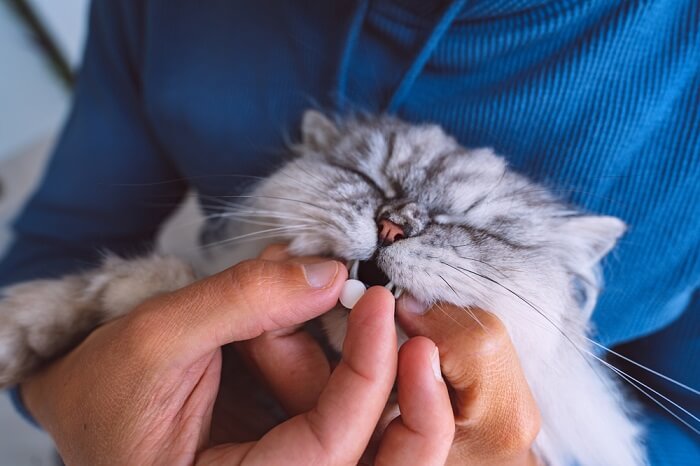At the point when a feline’s safe framework distinguishes a danger, like contamination, irritation, malignant growth, or certain prescriptions, it discharges synthetic compounds that trigger a defensive climb in internal heat level, as a rule above 39.5°C (103.1°F).
This fever, as it is called, is intended to keep the body from being overpowered by sickness. An exceptionally high fever, (for example, over 41°C or 106°F) may harm interior organs and can be lethal, so it’s critical to recognize the indications of high fever and act right on time by reaching your vet.
What Is A Normal Body Temperature For A Cat?
Typically, a cat’s inner internal heat level ought to sit somewhere close to 36.7°C to 39.2°C (98.1°F to 102.5°F). C
Signs Your Cat May Have a Fever
- Lower energy and action
- Absence of hunger
- Muscle shuddering
- Breathing quicker, gasping
- Ridiculousness, breakdown, or spasms (seizures or fits) in extreme cases
Normal extra side effects that are more well defined for the different fundamental reasons for the fever include:
- “Pot-bellied,” enlarged midsection (e.g., wet type of cat irresistible peritonitis or FIP)
- Limping (e.g., wounds or abscesses)
- Spewing/lose bowels (e.g., gastroenteritis)
- Wheezing (e.g., feline influenza)
- Shortcoming or paleness (e.g., cat irresistible sickliness)
Felines with any kind of aggravation or weakness embrace a Gloria Gaynor “I Will Survive” way to deal with life — they essentially trooper on as typically as could really be expected. It’s a cat’s instinctual approach to trying not to point out themselves at this weak time.
Reasons for Fever In Cats

Fever is brought about by various things incorporating viral and bacterial contaminations, malignant growth, and different infections.
Viral diseases
- Cat Covid: The most widely recognized reason for fever in felines has been accounted for as catlike irresistible peritonitis (FIP)
- Retroviruses: FeLV (cat leukemia infection) and FIV (cat immunodeficiency infection)
- Feline influenza (cat herpes and caliciviruses)
- Cat panleukopenia infection (FPV, cat parvovirus, irresistible enteritis)
- Rabies
Bacterial contaminations
- Abscesses and wounds
- Urinary and regenerative parcel contaminations (e.g., bacterial cystitis, pyometra in unsterilized females)
- Septicemia (blood contamination)
- Body pit contaminations from relocated unfamiliar articles (e.g., breathed in grass seeds, ingested bones), obtuse injury (e.g., burst digestion tracts), or profound stabbings (e.g., assaults from hunters)
- Food-borne microbes (from defiled food or prey)
- Ticks and Fleas tainted with Mycoplasma, Bartonella, or Borrelia
Protozoan and Fungal Infections
- Cytauxzoon
- Toxoplasmosis
- Cryptococcosis
- Histoplasmosis
Incendiary Diseases And Cancers Of The Immune System
Lymphoma
Bone marrow disease
Drugs
Antibiotic medication anti-microbials
Treatment Of Fever
Contingent upon their discoveries, your vet might recommend these normal medicines:
Physician endorsed Medications
Feline safe enemy of inflammatories: These cut down high fevers, and ease irritation and torment while your vet is looking for a reason for the fever. Never give your feline human medications like anti-inflammatory medicine and acetaminophen (paracetamol) on the grounds that these are harmful to felines.
Antibacterial or antiviral prescription
Immunomodulating medications and chemotherapy specialists: this objective irritation and disease.
Nutraceuticals: These dietary enhancements support your feline’s own protection.
Rehydration And Nutritional Therapy
A few got dried-out felines might require hospitalization and rehydrate with liquids through an intravenous dribble or subcutaneously (under the skin). All the more seriously impacted felines might require tube taking care of straightforwardly into their stomach.
At-Home Supportive Care
No matter what the basic condition, there is such a lot that you can do at home, close by your vet’s medicines, to ease fever side effects and keep your feline hydrated and sustained so they can battle the fever’s goal until the experimental outcomes are accessible.
Here are critical things to zero in on:
Entice debilitated or older felines to eat
Urge felines to work on their liquid admission
Cool them somewhere near delicately cleaning their armpits, crotch, and sanctuaries (meagerly haired region before the ears) with tepid soggy wool or washcloth
Offer choices for felines to manage their own solace levels by permitting admittance to cooler pieces of the house and nursery and further developing wind current with a securely opened window, cooling or fans

